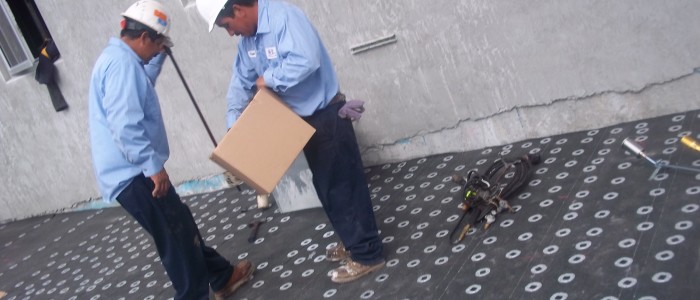Thanks to the advance of technology and invention of new materials, people today are able to choose roofs made of any materials and in any shape, regardless of the climate zone in which their home or business is located. The material used in the construction and roof covering can be the same, but then the elements are considerably different in the way they were produced and their dimensions. Besides the final covering part, the roof covering system can consist of substructure, hydro and thermal insulation, vapor barrier, air barrier etc.
Brick products or tiles have long been the most common and most popular way of covering buildings in most of the world’s architectural tradition. Tiles are very durable and flexible and because of the special overlapping system this roof covering is not sensitive to small and even larger displacement of the roof structure and they continue to perform its role even when accidents like that happen. Another advantage of using brick products is the possibility for reuse of these elements because every upgrade or reconstruction can be finished and the tiles placed back in their position numerous times. The only downside of this covering is the fact that they are heavy and they are burdening the roof and that’s why their use today is limited mostly on small individual objects and in cases where owners want to preserve the traditional appearance.
Metal roofing materials have a long tradition, too. Even medieval churches in Europe were covered with copper and lead plates and the use of sheet metal is present today. Roofing with sheet metal plates with double and triple folding is one of the most valued construction craft skills. These roofs are made without any penetration of the sheet that later need to be opened so they can last for a long period of time when they are made of quality materials and when they are adequately protected. In modern times, using sheet metal is popular, based on treated and protected plates in production plants according to the design of a certain roof. In this way the installation process is accelerated and the possibility of making mistakes is minimal. The most common among them are deep profile roofing sheets with fleece which prevent steam condensation in the buildings. Unlike deep profile sheets that serve as support for the structure, these sheets have slightly smaller dimensions and weaker mechanical properties, but they are protected well thanks to certain chemical processes, special coatings and finishing colors. Aluminum, copper sheets, impregnated sheets and sheets enriched with titanium are the most common metal roofing options.
Roofing with slanted wooden planks (shingles) or reeds has changed a lot. In the past, people were forced to use this type of roofing material, but today people use it in order to achieve a particular aesthetic experience in the appearance of their homes.
The choice of roofing system, its shapes, materials and construction solutions are practically unlimited. However the selection of the structure, performance and types of materials for covering the roofs depend on local resources and markets, building standards and tradition.

Comments are closed.